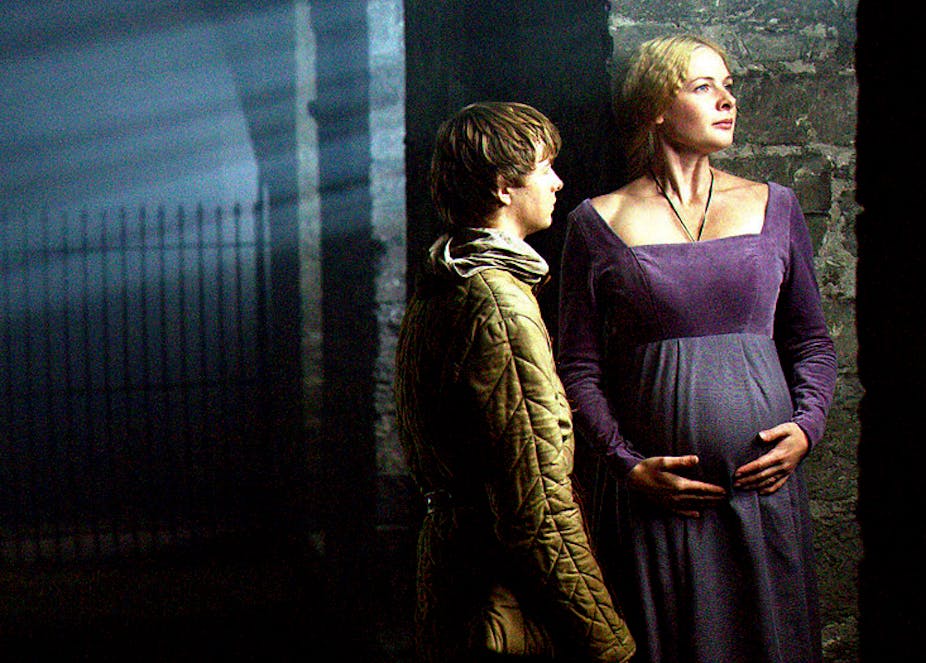The history of childbirth and midwifery has seen some dramatic changes, not only in new medical discoveries that vastly improved the safety of both mother and baby but also in social trends and the way we view giving birth.
The 18th century witnessed the rise of medical intervention and a more professionalised class of midwife - and of accoucheurs or men-midwives. But developments haven’t always been welcomed, straightforward or accepted. The story of maternity care has been (and remains) complex and often contradictory.
Today, the internet has enabled the exchange of more information than ever before and a new debate over whether childbirth has become too medicalised and subject to the power and authority of doctors.
Rise of the accoucheur
Before the 18th century, women in labour were traditionally attended by other women. These might be friends and relatives with experience or women who made it their profession. Women became midwives through an informal apprenticeship by attending labours, particularly in the company of another midwife.
At the beginning of the 18th century, the employment of medical men in the conduct of normal as well as abnormal labourers was rare. But by the end of the century, many women of all social classes would engage a medical practitioner rather than a midwife to attend them in their labours and virtually all the surgeon-apothecaries were also men-midwives or accoucheurs.
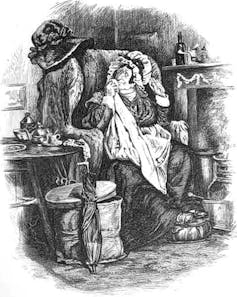
Accoucheurs characterised themselves as the carriers of rational, scientific expertise to an area hitherto dominated by allegedly backward and dangerous practices. This view of the “incompetent midwife” was popularised in Charles Dickens’ Sarah Gamp, an alcoholic midwife, sick nurse and layer-out of the dead in Martin Chuzzlewit.
Lying-in hospitals
This growth in male-midwifery went in tandem with the development of hospitals as a place for women to give birth. From about 1740, lying-in hospitals were established in Britain, as well as outpatient maternity charities. By the 1790s between a third and a half of all deliveries in England are estimated to have been attended by medical practitioners.
It has been argued that this rise in more medicalised births through male doctors and the sudden rise of the acchoucheur undermined the female ceremony of childbirth by substituting women’s customs for new medical rites masquerading as scientific practices and founded on “objective” knowledge.
But it was also an age with a new spirit of medical enquiry, especially in the fields of anatomy and physiology. Surgeon-apothecaries, an early precursor to our modern-day family doctors, also appeared during this time. They were trusted to deliver your babies, but also to attend your children’s complaints, treat your fevers and indigestion, set your fractures, dress your wounds and ulcers, and draw your teeth.
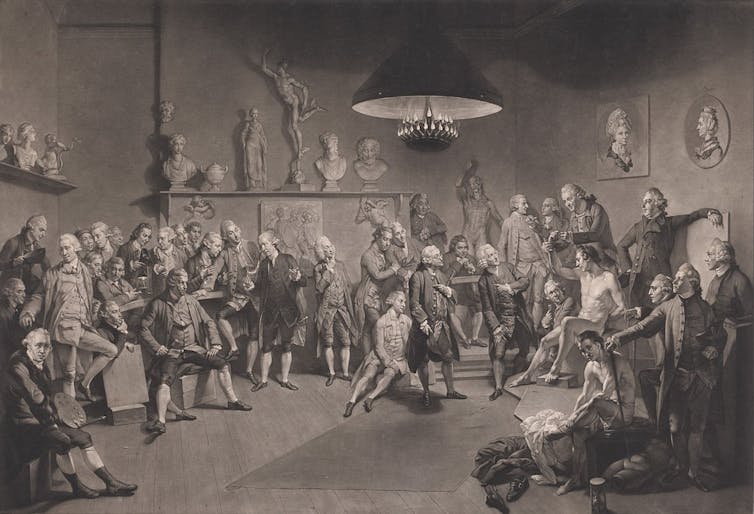
The rapid adoption by the surgeon-apothecary of the role of man-midwife could have taken place only if it were actively sought by women and their husbands. Despite this shift, the majority of women throughout the 19th century continued to be delivered in their own homes by locally-based midwives.
There were sporadic attempts to develop midwifery training and regulation during the century but most midwives remained untrained until the first Midwives’ Act introduced in 1902 to regulate training and practice.
Caesarean sections
In the 1900s, caesarean section deliveries increased. Before the 1890s it had been so dangerous that they were scarcely ever performed. But the widespread introduction of maternal welfare clinics and antenatal care, and obstetric specialists and maternity beds meant they became a more tenable option.
Yet, in spite of all these supposed advances, maternal mortality remained on a high plateau from 1850 to the mid-1930s - the risk of a mother dying in childbirth was as high in 1934 as it was in the 1860s.
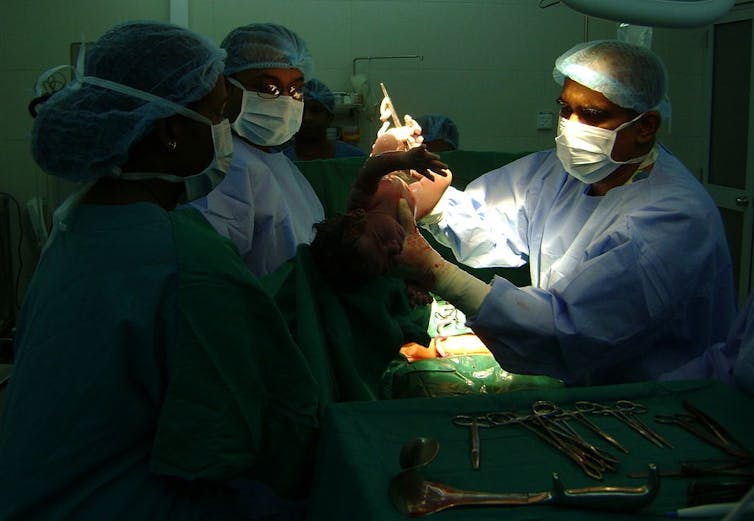
Anti-bacterials and antibiotics
The introduction of anti-bacterial sulphonamide drugs in 1936-7 cut deaths from puerperal fever, a bacterial infection contracted by women during childbirth or miscarriage. Between 1937 and 1945, about 70% of the steep decline was due to this factor alone.
Other drugs that cut the mortality rate were the introduction of ergometrine, which narrows blood vessels and can be used to help deliver the placenta and prevent bleeding. The discovery of penicillin by Alexander Flemming in 1928, also cut infection.
Blood transfusions also became widely available. An early pioneer was Dr James Blundell, a British obstetrician who in the early 19th Century used animal experiments to treat hemorrhages. In 1818 he performed the first successful human transfusion to treat a hemorrhage after a birth.
Home to hospital
The greatest transformation in the postwar period was the acceleration of the move from home to hospital as the usual place of birth. This trend had been gaining momentum throughout the 20th century. Nationally, the proportion of deliveries in hospital was about 64% percent in 1954 and only slightly more in 1960. But between 1963 and 1972 the rate rose from about 68% to 91%. From 1975 onwards it has never fallen below 95%.
Ultrasound
New technologies within hospitals have marked a further evolution in antenatal care in the latter decades of the 20th century. New antenatal testing and monitoring became widely available - most notably the introduction of ultrasound. By the 1980s ultrasound was the accepted way of viewing the foetus and used to routinely screen for gestational age.
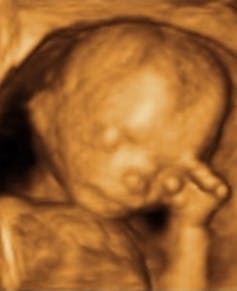
Originally used as a diagnostic aid in high risk pregnancies, ultrasound scans are now widely accepted as a rite of passage in pregnancy; 12-week scans today are when we start to see the foetus as a “real baby” and announce the news. We now have 3D colour ultrasound scans and 4D in real time.
Intervention also became a feature of birth itself with an increased use of oxytocic drugs, to induce labours, episiotomies, or surgical incisions, and more caesarean sections.
At the turn of the 21st century the language of choice, control and consent were increasingly used in maternity care, with midwives recasting their role as the lead professional, but as Tania McIntosh argues it’s really the language of science, technology and risk that has come to define childbirth at the start of this new era.
This article is part of a collaboration between BBC Learning and The Conversation. You can read more on the BBC History page

